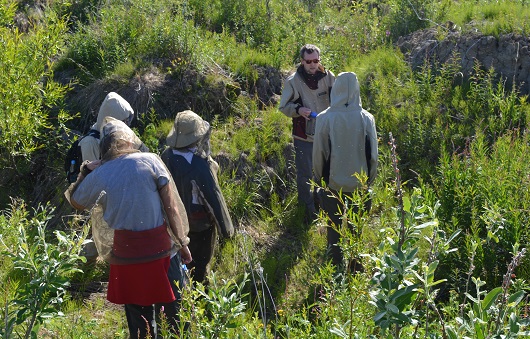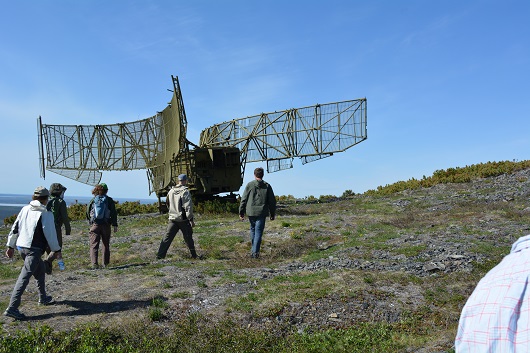Cherskiy. In the months and weeks and days leading up to Polaris, I heard that word thrown around a lot: “make sure to bring those vials to Cherskiy,” “the mosquitoes are way bigger in Cherskiy,” “pack light for Cherskiy.” But as much as I heard about it, and as much as I tried to piece together some patchwork image of what it’d be like, nothing matches up to what Cherskiy actually is. When that Soviet-era propeller plane came to a bumpy halt on the town’s unnervingly short landing strip, I breathed a sigh of relief and got my first true look at this crazy place.
Full disclosure: a lot of my expectations were pretty far off. Turns out the mosquitoes are not the size of monkeys, we don’t eat moose pancakes for breakfast and moose mousse (ha ha) for dessert, and the barge is fully and beautifully furnished. The landscape itself is more stunning than the papers described or the pictures captured. I got a small taste of the tundra in Alaska, and I was happy to be reacquainted with the crisp, piney smell of the ledum and the thick carpets of moss, in shades like 1970s tan and neon green.
We spent much of today, our first full day in Cherskiy, getting our bearings and starting to explore the area. The Core Group took an afternoon field trip to the Rodinka Mountain to experience the vastness of the landscape (and to play on an old, rusted out radio satellite), and then to the site of the “bulldozer experiment.” The experiment started ten years ago, when the Zimov’s took a bulldozer to a one square kilometer plot a couple miles from the station, removing all vegetation in order to simulate the effects of permafrost degradation in a warming climate. The effects were very apparent: marked polygonal depressions caused by thawed ice wedges, a lack of moss, and incredibly deep thaw depths. The experiment told an in-your-face story that I found to be way more powerful than data alone.
Now, reading midnight, my watch tells me the sun should be long set. But it never will. It’s still shining proudly over the calm blue waters of the Panteleikha, where our floating home is docked. That’s just one of the many mysterious things about the Arctic. I can’t wait to discover so many more.

Paul doing some teaching at the bulldozer experiment site.

The crew checking out the old radio satellite on Rodinka Mountain.



